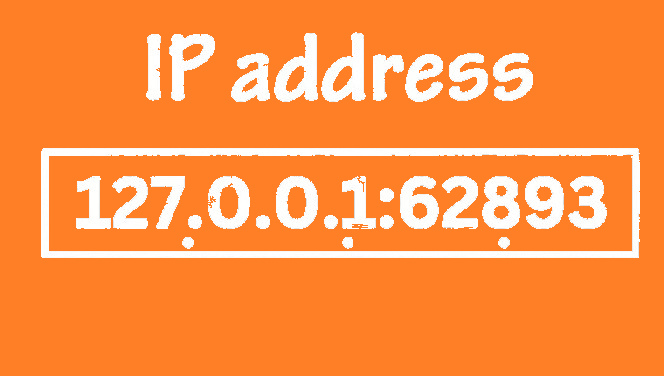In the vast tapestry of internet protocols and network addresses, one particular address often grabs attention—127.0.0.1, specifically with an appended port like 62893. But what does this peculiar combination mean, what are the common errors associated with it, and how can you effectively fix them?
Understanding 127.0.0.1: The Localhost Address
The IP address 127.0.0.1 is known as the
localhost or loopback address. It is an integral part of the IPv4 network addressing scheme. Essentially, when you point to 127.0.0.1, you’re referring to your own device. This address allows a computer to communicate with itself, which is particularly useful for testing and development purposes.
The significance of the 127.0.0.1 address lies in its role in network software development. Developers use this localhost address to simulate a network environment on their own machines without having to connect to an external network. It helps debug and test applications in a controlled and self-contained environment.
The Role of Ports: What Does “62893” Mean?
While the IP addresses the host machine, the port number specifies a particular process or service on that machine. Ports range from 0 to 65535, with ports 0 to 1023 designated as “well-known ports” typically reserved for core services. Higher-numbered ports like 62893 are often used for specific applications or services.
When you see
127.0.0.1:62893, it means you’re accessing a service running locally on the port 62893 of your machine. This could be a database server, a web server, or any other service programmed to operate on this unique port.
Common Errors Associated with 127.0.0.1:62893
Despite the utility of localhost and associated ports, users often encounter several errors that can be frustrating to debug. Here are some prevalent issues:
1. Port Already in Use: One of the most common problems is the “port already in use” error. This happens when another application is already using port 62893. The simplest fix is to identify and terminate the conflicting process or reconfigure the application to use a different port.
2. Connection Refused: A “connection refused” error typically indicates that no application is listening on the port you’re trying to access. This could happen if the service has failed to start or if there is a firewall blocking the connection. Ensuring the service is running and checking firewall settings often resolves this error.
3. Network Configuration Issues: Misconfigured network settings can lead to an inability to connect to localhost. These errors are rarer but resolving them might require delving into your network configuration to ensure localhost is correctly recognized.
Essential Fixes and Best Practices
To effectively handle and prevent common errors associated with 127.0.0.1:62893, consider the following strategies:
1. Check for Conflicting Applications: Before running your service on a particular port, verify that no other application occupies that port. Use command-line tools like
netstat or
lsof on Unix-based systems to identify port usage.
2. Ensure Services are Running: Verify that the service you intend to connect to is actively running. You can restart the service or check its status through system management tools or command-line controls.
3. Firewall and Security Settings: Firewalls can block connections, even on localhost. While working within a secure, controlled environment, ensure your firewall settings permit communication to the required ports. Be cautious and aware of security implications when altering firewall settings.
4. Use Correct Network Configuration: Make sure your network configuration recognizes the localhost and that your
/etc/hosts file appropriately maps
127.0.0.1 to the hostname.
Final Words
The combination of 127.0.0.1 with a port such as 62893 plays a critical role in local development and testing environments. By understanding what this address represents, recognizing common errors, and applying best practices, you can ensure a smooth and effective use of localhost services. With these insights, you’re well-equipped to navigate the complex landscape of network addresses and ports, creating a robust foundation for your application’s development and deployment.
The combination of 127.0.0.1 and a specific port like 62893, it’s essential to grasp that this setup not only facilitates isolated testing but also simplifies troubleshooting by focusing issues on local/dev environments. Proactive steps, like regular monitoring and documentation of used ports, pave the way for consistent operations. Additionally, maintaining an updated hosts file and firewall rules ensures seamless connectivity and security. Regularly updating your system to accommodate new protocols and patches enhances stability. Adopting these best practices transforms potential errors into opportunities for learning and improvement, thereby strengthening your entire development infrastructure.



